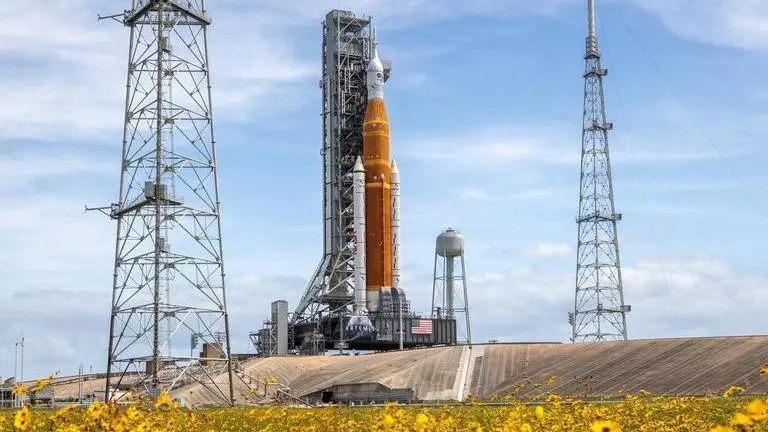Updated 17 May 2022 at 16:06 IST
NASA releases full schedule of launch windows for Artemis I moon mission; lists 4 barriers
NASA's schedule comprising the launch opportunities will begin on July 26 and extends till December 23, 2022. Read to know about the four major barriers.
- Science News
- 3 min read

The Artemis program that would take humans back to the moon will get a kickstart with the launch of Artemis I later this year. NASA will conduct the launch from the Kennedy Space Center in Florida using its Space Launch System (SLS) mega-rocket in its debut liftoff. Currently under development, the rocket will get a total of 73 launch opportunities if the agency plans to launch it this year.
NASA, on Monday, released the full schedule for the Artemis I mission and the potential launch opportunities that the agency could use for blasting the rocket to the moon. According to NASA's schedule, the first launch window begins on July 26 and extends till December 23, 2022. Let us take a look at the potential launch opportunities marked by NASA.
July 26 – August 10: 13 launch opportunities barring August 1, 2, and 6
August 23 – September 6: 12 launch opportunities barring August 30, 31, and September 1
Advertisement
September 20 – October 4: 14 launch opportunities barring September 29
October 17 – October 31: 11 launch opportunities barring October 24, 25, 26, and 28
Advertisement
November 12 – November 27: 12 launch opportunities barring November 20, 21, and 26
December 9 – December 23: 11 launch opportunities barring December 10, 14, 18, and 23
What are the four primary parameters that determine when #Artemis I can launch?
— NASA Artemis (@NASAArtemis) May 16, 2022
The Moon’s position in the lunar cycle
The amount of sunlight for @NASA_Orion
A trajectory that allows for a skip entry
Daylight conditions for splashdown
More: https://t.co/VBBQwqLnuM pic.twitter.com/I10dWc2V2t
Parameters dictating launch opportunities
Although the number of launch windows looks sufficient for a single launch, NASA has highlighted some major parameters that dictate the launch opportunities within the aforementioned period. To understand these parameters, we first have to note that the uncrewed Orion spacecraft, ready to launch during Artemis I, will be sent into a special path called the Distant Retrograde Orbit (DRO). This orbit is said to be stable due to the balance created by the gravitational forces of the Earth and the moon and also allows a spacecraft to cruise with less fuel expense. Tap here to read more about this orbit and Orion's mission profile.
Hey #NASASLS, those spring flowers look good on you! 💐
— NASA_SLS (@NASA_SLS) May 11, 2022
📸 Photo credit: NASA/ Michael DeMocker and Ben Smegelsky pic.twitter.com/dnp0CipUP7
Now, NASA is looking for the perfect day taking into account the moon's position during its lunar cycle so that the Orion capsule can be easily inserted into the DRO. The SLS rocket's upper stage is required to execute a big move called a trans-lunar injection, or TLI, wherein the capsule will be sent 3,86,242 kilometres from Earth and further 64,373 kilometres beyond the moon.
Another major parameter is taking into account the trajectory of the Orion spacecraft when it is pushed out into space. The trajectory needs to be such that the spacecraft does not remain in darkness for more than 90 minutes. Orion needs sunlight to power its solar panels to generate electricity and maintain an optimal temperature range. The launch date allowing for a skip-entry maneuver is another important parameter.
This maneuver is a re-entry technique wherein a spacecraft dips into the upper part of Earth’s atmosphere and use that atmosphere, along with the lift of the capsule, to simultaneously slow down and skip back out of the atmosphere, then reenter for final descent and splashdown. NASA says that "the technique allows engineers to pinpoint Orion’s splashdown location and on future missions will help lower the aerodynamic breaking loads astronauts". The fourth and final parameter is that the launch date must offer daylight conditions during Orion’s splashdown when the recovery personnel locate, secure, and retrieve the spacecraft from the Pacific Ocean.
Published By : Harsh Vardhan
Published On: 17 May 2022 at 16:05 IST
